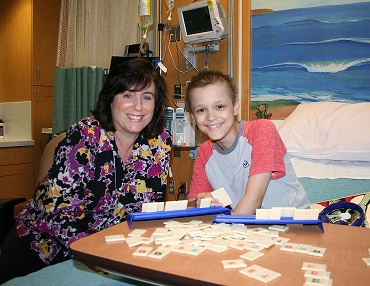Physical pain is an unpleasant feeling that comes with physical injury, damage or disease. Children as young as 3 can identify the intensity of their pain. Typical signs of pain in infants and children include crying, agitated body movements, sweating, rapid heart beat and irritability.
unpleasant feeling that comes with physical injury, damage or disease. Children as young as 3 can identify the intensity of their pain. Typical signs of pain in infants and children include crying, agitated body movements, sweating, rapid heart beat and irritability.
Measuring Pain in Children
There are various ways to measure pain in children, including what a child says, what a child is doing and how the child’s body is reacting. Since you know your child best, compare what you recognize to be normal behavior with changes in eating, sleeping, moving and crying. With older children, you can ask them to point to where it hurts or to describe the pain. It’s also helpful to ask children to rank their pain on a scale from one to 10, one being the least amount of pain. Always consult your physician about the normal range of pain for your child related to their specific physical injury, damage or disease.
Helping Your Child Cope with Pain
There are various ways for you to help your child cope with his or her pain, including holding, comforting and distracting your child. Honesty is also an important part in helping your child to trust in you and the medical staff. Be honest with your child about what will hurt and how long the pain will last. Using honest yet simple language helps children learn to trust you and the plan of care. Give children choices whenever possible so that they feel a sense of control and mastery over their environment. Giving choices when possible not only helps the children feel in control, it helps them become more compliant with the plan of care. Examples of appropriate choices are: “Do you want to take your medicine with water or juice?” or “Do you want to take the Bandaid off or do you want me to?”
Encourage your child to ask questions and express their feelings about pain and illness. Let your child know that it’s ok to cry and be upset. Validate how they are feeling and offer them strategies for coping. Listen to your child’s concerns and offer or model ways to cope with pain and stress.
Coping Strategies
- Deep breathing can help reduce pain and gain self-control. Teach this by asking the child to breathe in a big breath and release slowly. While he is releasing the air, have him imagine letting go of the tense feelings with each breath. A straw can be used for children who have a difficult time taking a deep breath. Bubbles and pinwheels are other tools that can be used to help children with deep breathing. With older children, you can teach them to imagine breathing in all of their negative emotions and pain, hold for a few seconds, and then slowly exhale through their nose. This helps children gain focus and control.
- Distraction is a great way to help children of all ages focus away from their pain. Some useful tools that can be used for distraction include music, pop-up books, treasure hunt books, magic wands, 3-D books and movies.
- Relaxation is very useful in children of all ages. Music is a very common way to assist children in relaxation. Giving them choices of the type of music they like and find soothing helps with this technique. Children can also relax their bodies as they are relaxing their minds. They can gradually tighten and loosen their muscles from head to toe, promoting a relaxed state.
- Guided imagery can be used by talking about a favorite show or past event. This can help children relax and focus. Creating or reading a story helps children use their imagination to focus on something else besides their pain. Children can also close their eyes and think of a time or place when they were doing something that they enjoyed. Encourage children to think of details surrounding the place or event to foster their imagination.
- Healing touch is an energy-based therapy used to restore and balance the human energy system. This work compliments other healthcare modalities and often brings about a decrease in pain, a decrease in treatment side effects, relief of anxiety and acceleration of the body’s healing process. The therapy was originally developed for nurses.
- Play is a vital part of every child’s life, even when they are in pain. Play helps children cope and learn from their environment. Giving an opportunity to play after or during a stressful event helps children gain control over their environment. This not only helps to reduce stress and anxiety, it also provides a safe outlet for expression of their emotions. Play promotes normal growth and development and can be adapted to fit children with various physical injuries or diseases.
Remember, there are many ways to help your child cope with pain. You know your child best so any of these strategies can be adapted to better fit your child’s needs. Trial and error is often used to find the most effective techniques that your child feels comfortable with. If your child’s pain continues or increases consult your doctor for further advice.